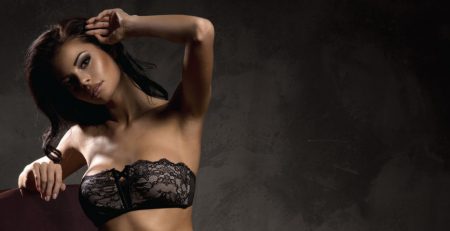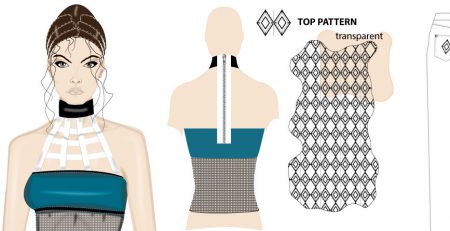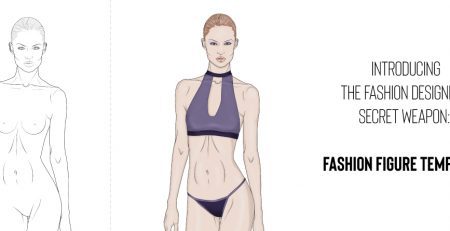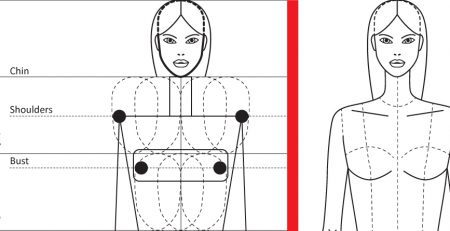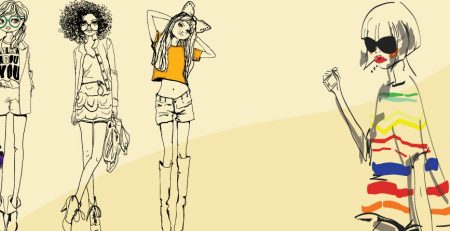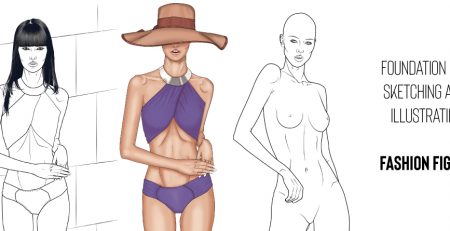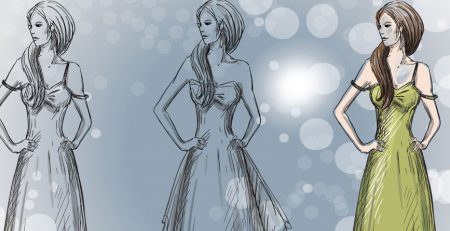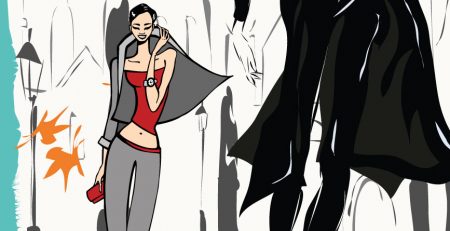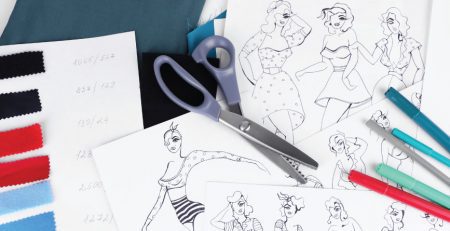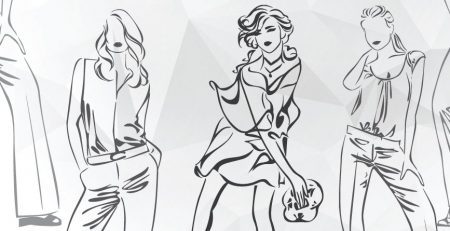Setting up your workspace to enable you to draw fashion is a fundamental starting point. You should always begin by considering your light sources: make sure that you can see what you are doing. Some people draw fashion on a flat surface but it is worth considering whether to raise your sketchbook or paper off the table and arrange it into an easel position. This should also free up your arms, which is always the best way to approach drawing.
Example of working desk space:
Good tools are not much use if you don’t have a workable space in which to use them. Your furniture does not have to be fancy, but it should be comfortable and efficient.
• Organize and take care of your tools. Everyone has a personal system, which is fine. But you don’t want to have to hunt for tools in the middle of the creative process—or before a big deadline.
• A decent drawing table and a comfortable padded chair that raises and lowers are essentials.
• You really need two comfortable chairs: one for your drawing table that is higher, and one for your computer table that is at normal height. Both should have wheels.
• An ideal space allows you to spread out a bit, so you can get back from your work.
• Put a bulletin board on the wall so you can put up your work in progress and look at it. Bulletin boards are also great for collecting good inspirational imagery.
• Put in good lighting that is as close as possible to the lighting where your work will be critiqued.
• If space allows, purchase a sturdy work table that is at a good height for you. Cutting and pasting on the floor is hard on your back, knees, and general morale.
• You also need table space for your computer equipment, especially if you have a larger scanner. You want to have room for some papers as well as your equipment, and it pays to keep computer paper close by.
• Try to have your drawing table and your computer/scanner in close proximity so you can move fluidly from one to the other.
• Keep your drawing table as clear as possible so you have room to work efficiently.
• Creative people should have a good collection of reference books: on fashion, art, different cultures, textiles, drawing styles, etc. Start collecting now, and have a bookshelf to organize them so you can find what you need.
• If you work well listening to music, make sure you keep a few favourite CDs on hand to play on your computer or stereo. This can also help keep you alert and awake when you have to “pull an all-nighter.”
Arranging your art supplies on the same side as your drawing hand will help to reduce unnecessary stretching, and helps avoid simple accidents such as dripping paint on your drawing.
Pencils and charcoal
Pencils are among the most versatile and widely used drawing tools for fashion designers and fashion students alike. They are available in a wide range of grades, but most people work within the 2H, H, HB and 2B range. Each grade offers a different density and line quality. The harder grade pencils can be useful for producing fine-detailed line drawings, while the softer grades are well-suited to more expressive sketch drawings and adding tonal values. It’s always worth experimenting with a pencil drawing, especially when starting out. Pencils are well-suited to most papers and holding positions; they may be sharpened and adjusted and their lines can easily be erased.
Charcoal is useful for fashion life drawing. Drawing with charcoal is a much looser experience than working with a pencil since it offers bolder lines that are not intended to be erased. It is a good medium for loosening up and drawing on larger paper sizes. Newsprint is well-suited for charcoal, allowing its deeper tonal values to come through.
Coloured pastels
These broadly describe a family of pastels that includes soft pastels, hard pastels and oil pastels. Made from ground colour pigment combined with gum, soft pastels are available in a variety of vibrant colours and graduated tints. They can sometimes feel slightly crumbly in the hand but are blendable and leave a soft, almost creamy mark on paper. Hard pastels are firmer to the touch. These are suitable for producing broad, flat areas of colour as well as finer lines. Chalk pastels, which are made up of limestone with added pigment, are tonally lighter than pure pigment pastels and require a fixative to prevent smudging. Chalk pastels are sometimes used for fashion life drawing as an alternative to charcoal and are also available in pencil form. Perhaps less used in fashion, oil pastels do not require a fixative and characteristically produce a thick buttery mark. They can be used on oil painting paper and may be dissolved with turpentine to create softer smudged colours.
Inks
Inks were much used in the early 20th century to produce black or colour fashion drawings and they still offer a distinctive colour media choice. They can be applied with brushes or nibs and are available in a wide range of colours that can be mixed to produce almost any hue. It’s important to differentiate between inks that are water-soluble and waterproof. Both can be used to create wash effects, although water-soluble inks tend to sink into the paper and dry to a matt finish. Adding water will dilute the ink further and create lighter tones. Waterproof Indian inks are popular with some fashion illustrators and can be used to create line and wash effects across a variety of paper surfaces.
Paints
The most widely used paints for colour fashion drawings and fashion illustrations are watercolour and gouache, both of which are water-soluble. Watercolour paints are enduringly popular as they offer soft, subtle colour washes and translucent colour effects. Watercolours can be mixed with coloured pencils to good effect but should be allowed to dry beforehand. It’s best to apply watercolour as a wash without going over it too much as it is not intended to produce an opaque surface. Good-quality watercolour paints have been developed to eliminate hard edges. Gouache is an opaque watercolour paint and is suitable for laying down a flatter, more even and opaque colour. Conversely, it is sometimes watered down but this is not how it should be applied.
Chinagraph pencils
These hard wax pencils are also known as china markers or grease pencils. Originally developed for marking on glossy, non-porous surfaces such as glass, plastic and other glazed surfaces, these versatile pencils also work well on newsprint paper for figurative drawing and sketching. The lines they make are bolder than regular pencils and suitable for mark-making. Although mostly available in black they do come in a limited range of colours.
Finally, relax and enjoy the experience.


